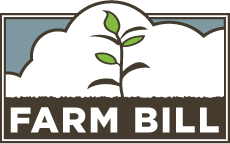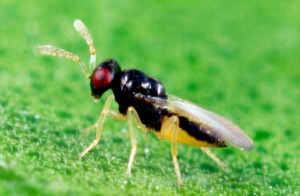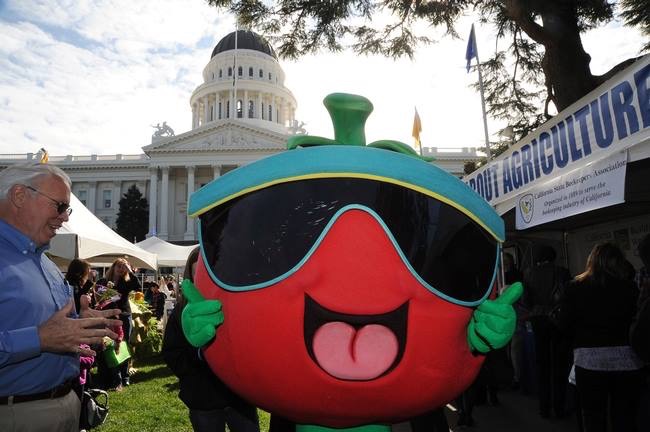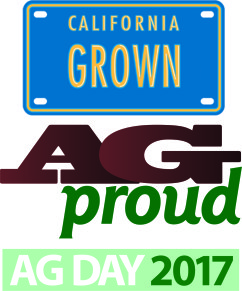-
Recent Posts
- $600 million for CDFA in new budget year
- A Pride Month Conversation with Cody Nicholson Stratton, of Foggy Bottoms Boys Farms
- Experience California Agriculture — Secretary Ross applauds new agritourism website from California Grown
- CDFA Celebrates Pride Month with Panel of LGBTQ+ Voices
- CDFA marches with Pride in Sacramento
Recent Comments
- Stacy Hackney on Despite Tariffs, California Continues Trade Engagement
- Keshav Boddula on Earth Week spotlight — CDFA Food Recovery webpage offers resources for reducing food waste
- Don’t Worry, US Investors Can Still Make Offshore Wind Happen … Somewhere – Bruce Beach CA News on California Peaches and Nectarines Arrive in Vietnam! New Export Market Opens for California Products
- US Investors Can Still Make Offshore Wind Happen…In Vietnam - Oilandinvest.com on California Peaches and Nectarines Arrive in Vietnam! New Export Market Opens for California Products
- US Investors Can Still Make Offshore Wind Happen…In Vietnam - nrinvesting.com on California Peaches and Nectarines Arrive in Vietnam! New Export Market Opens for California Products
Archives
- July 2025
- June 2025
- May 2025
- April 2025
- March 2025
- February 2025
- January 2025
- December 2024
- November 2024
- October 2024
- September 2024
- August 2024
- July 2024
- June 2024
- May 2024
- April 2024
- March 2024
- February 2024
- January 2024
- December 2023
- November 2023
- October 2023
- September 2023
- August 2023
- July 2023
- June 2023
- May 2023
- April 2023
- March 2023
- February 2023
- January 2023
- December 2022
- November 2022
- October 2022
- September 2022
- August 2022
- July 2022
- June 2022
- May 2022
- April 2022
- March 2022
- February 2022
- January 2022
- December 2021
- November 2021
- October 2021
- September 2021
- August 2021
- July 2021
- June 2021
- May 2021
- April 2021
- March 2021
- February 2021
- January 2021
- December 2020
- November 2020
- October 2020
- September 2020
- August 2020
- July 2020
- June 2020
- May 2020
- April 2020
- March 2020
- February 2020
- January 2020
- December 2019
- November 2019
- October 2019
- September 2019
- August 2019
- July 2019
- June 2019
- May 2019
- April 2019
- March 2019
- February 2019
- January 2019
- December 2018
- November 2018
- October 2018
- September 2018
- August 2018
- July 2018
- June 2018
- May 2018
- April 2018
- March 2018
- February 2018
- January 2018
- December 2017
- November 2017
- October 2017
- September 2017
- August 2017
- July 2017
- June 2017
- May 2017
- April 2017
- March 2017
- February 2017
- January 2017
- December 2016
- November 2016
- October 2016
- September 2016
- August 2016
- July 2016
- June 2016
- May 2016
- April 2016
- March 2016
- February 2016
- January 2016
- December 2015
- November 2015
- October 2015
- September 2015
- August 2015
- July 2015
- June 2015
- May 2015
- April 2015
- March 2015
- February 2015
- January 2015
- December 2014
- November 2014
- October 2014
- September 2014
- August 2014
- July 2014
- June 2014
- May 2014
- April 2014
- March 2014
- February 2014
- January 2014
- December 2013
- November 2013
- October 2013
- September 2013
- August 2013
- July 2013
- June 2013
- May 2013
- April 2013
- March 2013
- February 2013
- January 2013
- December 2012
- November 2012
- October 2012
- September 2012
- August 2012
- July 2012
- June 2012
- May 2012
- April 2012
- March 2012
- February 2012
- January 2012
- December 2011
- November 2011
- October 2011
- September 2011
- August 2011
- July 2011
- June 2011
Categories
- AG Vision
- Agricultural Education
- Agricultural Marketing
- Alternative Fuels
- Animal health
- Animal Welfare
- Asian Citrus Psyllid
- Biodiversity
- Border stations
- BSE
- Cannabis
- Cannella Panel
- Climate Change
- Climate Smart Agriculture
- Community-based Food System
- Conservation
- Dairy
- Drought
- Environment
- Fairs
- Farm Bill
- Farm Labor
- Farmers' Markets
- Fertilizer
- Food Access
- Food Safety
- Food Waste
- Glassy-winged Sharpshooter
- Growing California
- Healthy soils
- HLB
- Hydrogen
- Integrated Pest Management (IPM)
- Invasive Species
- Light Brown Apple Moth
- Livestock ID
- Measurement Standards
- Nutrition
- Organic agriculture
- Pierce's Disease
- Pollinators
- Specialty Crops
- State Board of Food and Agriculture
- Succession Planning
- Trade
- Uncategorized
Pages
RSS

Climate Smart Agriculture Policy Mission – Secretary Ross and Ag delegation in Australia

Old Parliament House in Canberra, Australia. Once the seat of Parliament, it has served as a museum in recent years.
CANBERRA, the Australian capital: A number of us were late in arriving to Canberra because of weather delays while traveling. So we made a quick turnaround to join up with the rest of the delegation and our hosts for day-one of our visit, starting at the offices of the Australian agriculture ministry.
We then observed the Parliamentary “Question Time” at the Capitol building. Now that is an interesting way for members to question/challenge the prime minister and majority party about leadership policies and proposals!
As we left the building there was quite a display of military in front of the Parliament awaiting review by the prime minister. The Capitol itself is an impressive structure; it is built upon a hill overlooking a reflecting pool, the nation’s war museum, and a mall leading to a war memorial.
The afternoon of our first day ended with a fascinating meeting with staff at Australia’s Climate Change Authority and its Department of the Environment and Energy. The Authority is an independent agency established to advise the government on emissions reduction strategies. It has a nine-member board of experts, including a chief scientist. It has recently undertaken an “action on the land” research project to seek ways to better coordinate action to reduce carbon emissions, enhance the natural environment, and improve on-farm profitability.
We had a great discussion about what works and what doesn’t; Australia’s reverse credit auction process; and how to achieve/fund multiple benefits from land management practices. The California delegation peppered them with questions. I guess we were inspired by “Question Time!”
Posted in Uncategorized
1 Comment
A Farm Bill for our families
 CDFA is in the midst of preparing California’s recommendations for the 2018 Farm Bill. The Farm Bill is renewed every five years and serves as the policy guideline for food and farming in the United States. The legislation touches all of us in numerous ways, as this series of blog posts will explain in greater detail.
CDFA is in the midst of preparing California’s recommendations for the 2018 Farm Bill. The Farm Bill is renewed every five years and serves as the policy guideline for food and farming in the United States. The legislation touches all of us in numerous ways, as this series of blog posts will explain in greater detail.
The Farm Bill affects well-being of families across the country, including right here in California, by helping to facilitate access to nutritious foods. With the support of the Farm Bill, California is committed to increasing food access for our most vulnerable and food-insecure communities. According to some estimates, up-to 20 percent of Californians are at risk of food insecurity, including more than two-million children, and more than one-million residents live in “food deserts,” where they lack access to basic grocery stores stocked with fresh fruits and vegetables. As the country’s largest producer of specialty crops, we must work to change that. Two titles in the Farm Bill – Nutrition and Horticulture – are helping us reach this goal.
Nutrition
The first of these titles is Title 4, or the Nutrition title. As the largest piece of the Farm bill pie (Nutrition accounts for over 80 percent of Farm Bill spending), the Nutrition title creates the Supplemental Nutrition Assistance Program, or SNAP. SNAP is the country’s largest food safety net program, and it helps millions of American families. In California, SNAP is known as CalFresh, and it provides nearly 4.2 million Californians with benefits. This support program also stimulates the economy. According to the USDA, every dollar invested in SNAP generates $1.79 in economic activity. Alongside SNAP, the Nutrition title also provides:
- $200 million for job training to help Americans get back on their feet
- $125 million for the Healthy Food Financing Initiative to help bridge the gap between underserved communities and healthy food retailers
- $100 million in incentives to increase fresh fruit and vegetable purchases
- An additional $250 million for the Emergency Food Assistance Program to help low- income families and senior citizens access food.
Specialty Crops
Numerous studies suggest that lack of access to fresh fruits and vegetables (specialty crops) can result in negative health impacts, including higher rates of diabetes and obesity. Through the Horticulture title, Title 10, the Farm Bill provides California with the support it needs for growth in the specialty crops sector through a variety of approaches, including the creation of promotional programs.
One example of this is “California Food for California Kids: Promoting California Grown Fruits and Vegetables in Summer Meals”. This program, established through the Specialty Crop Block Grant Program(SCBGP), promotes the quality and benefits of healthy, freshly prepared meals made with California grown fruits and vegetables. Specialty crop programs receive:
- $30 million to increase the consumption of locally and regionally produced agricultural products
- $72.5 million to the SCBGP to support marketing, pest management and food safety efforts
- $11.5 to the Organic Cost Share program to assist organic producers in their certification efforts
Both of these Farm Bill titles are instrumental in ensuring that Californians as well as all Americans have access to nutritious, safe and healthy food. California is the country’s number-one producer of specialty crops. Our farmers and ranchers are committed to producing fresh fruits, nuts and vegetables that have positive impacts for our families.
Posted in Uncategorized
Leave a comment
Video – Parasitic wasps released in Asian citrus psyllid project in Santa Clara County

A magnified photo of tamarixia radiata, a tiny stingless wasp utilized in the Asian citrus psyllid program. The actual size of the wasp has been compared to fleas or particles of dust.
CDFA has initated the release of tiny parasitic stingless wasps in Santa Clara County as part of the Asian citrus psyllid project there.
The wasps, called tamarixia radiata, control psyllid populations by parasitizing their egg masses. Once a population of wasps is released, successive generations are capable of flying up-to eight miles in search of Asian citrus psyllids.
This approach is one of many examples of CDFA pursuing biological control methods in its pest prevention programs.
In this video shot yesterday in San Jose, CDFA’s Dr. David Morgan discusses the program and then introduces the wasps to Santa Clara County agricultural commissioner Joe Deviney. Following that, Dr. Morgan and Deviney release the wasps on a property containing grapefruit, tangerine and kumquat trees.
Posted in Uncategorized
Leave a comment
More than a slogan – The urgent need to work together for a better water future

CDFA Secretary Karen Ross (second from right) at this week’s panel discussion: ‘The Common Good – Working Together for a Secure Water Future.” Others with Secretary Ross (from right) are moderator Mark Keppler of the Maddy Institute, Ashley Boren of Sustainable Conservation, Central Valley farmer Cannon Michael, former Fresno mayor Ashley Swearengin, and Ellen Hanak of the Public Policy Institute of California.
Earlier this week I joined people representing a diverse group of interests for a panel discussion about water. The event, in Clovis, was organized by Sustainable Conservation, and its title, The Common Good: Working Together for a Secure Water Future, represents much more than a simple, optimistic slogan. As our discussion made clear, working together is absolutely essential to maintain and build sustainability for California agriculture as well as the state’s ongoing development in all facets.
I was honored to join former Fresno mayor Ashley Swearengin, Sustainable Conservation’s Ashley Boren, the Public Policy Institute of California’s Ellen Hanak, and Central Valley Farmer Cannon Michael. Between the four of us and moderator Mark Keppler of the Maddy Institute, we covered the waterfront, so to speak – all of the modern demands for water were represented. Our group symbolizes the type of partnerships that must come together and move forward to effectively manage our future.
We know that demand for food worldwide will grow significantly over the next several decades, and we know that available natural resources are becoming more scarce – so to reach a point where sustainability can be achieved, all sides in the water discussion must truly communicate with one another. This is no longer about Farms v. Fish. Rather, it’s about building a California where we’re all vested in each other’s success. I hope you’ll take the time to view this video recording of our discussion and then join us in working together for a better water future.
Posted in Drought, Uncategorized
Leave a comment
Ag Day in a week!
Please join us next Wednesday, March 22, for Ag Day on the west steps of the California State Capitol. The festivities will be open to the public from 11:30 am to 1: 30 pm. Ag Day is the state’s annual celebration of agriculture, and this year’s theme is “California Grown: Ag Proud,” in recognition of the significant roles California’s farmers and ranchers play in producing a diverse, dynamic, complex food system.
As always, CDFA is co-sponsoring the event with the California Foundation for Agriculture in the Classroom and the California Women for Agriculture. The scheduled program will be hosted by California State Board of Food and Agriculture president Craig McNamara.
People attending Ag Day are urged to post photos to social media platforms with the hashtag #CalAgDay.
Posted in Uncategorized
1 Comment
Introducing the California Climate Investments web site – putting Cap-and-Trade dollars to work
California Climate Investments is a statewide initiative that puts billions of Cap-and-Trade dollars to work reducing greenhouse gas emissions, strengthening the economy, and improving public health and the environment.
The Cap-and-Trade program also creates a financial incentive for industries to invest in clean technologies and develop innovative ways to reduce pollution.
California Climate Investments projects include affordable housing, renewable energy, public transportation, zero-emission vehicles, environmental restoration, more sustainable agriculture, recycling, and much more.
To date, nearly $3.4 billion has been appropriated by the State Legislature to state agencies implementing GHG emission reduction programs and projects. Agencies receiving appropriations develop and implement programs within three priority areas: clean energy and energy efficiency; natural resources (and waste diversion); and transportation and sustainable communities.
At CDFA, two climate investment programs of note are the State Water Efficiency and Enhancement Program (SWEEP) and the Dairy Digester Research and Development Program. Both utilize grants to assist with projects that reduce greenhouse gas emissions and promote greater resource efficiency.
View the California Climate Investments web site.
View a story about the SWEEP program and its benefits on the farm.
View a story about a dairy digester project in the Central Valley.
Posted in Uncategorized
Leave a comment
A Farm Bill for our future
CDFA is in the midst of preparing California’s recommendations for the 2018 Farm Bill. The Farm Bill is renewed every five years and serves as the policy guideline for food and farming in the United States. The legislation touches all of us in numerous ways, as this blog post and others to follow in a series will explain in greater detail.
The Farm Bill is essential for agriculture in the present time, but it also plays a vital role in shaping our future. It helps fund research and education programs; it supports the development of our rural communities; and, significantly, it serves as a guide for young and beginning farmers who will carry the torch of California agriculture.
New and Beginning Farmers
California’s agricultural future depends on our next generation of farmers and ranchers willing to take on the responsibility. It’s not an easy job. The average age of farmers is trending upwards. Some estimates suggest that between now and 2018, there will be an 8 percent drop in the total number of farmers and ranchers. We need people to choose farming and ranching. The current Farm Bill has helped by providing:
- $100 million for the Beginning Farmers and Ranchers Development Program to offer and develop education, training, mentoring and outreach programs.
- Increased access to capital dollars to help new and beginning farmers start their operations with confidence.
- Reduced rates on crop insurance premiums for the first 5 years of farming
Research and Education
As home to the world’s best universities and research facilities, California has always led the way in developing cutting-edge research to help our farms, our food and our families. Historically, support from the Farm Bill has allowed us to excel at innovation. For example, federal research dollars have helped:
- Improve the environment through the adoption of climate smart agriculture technologies.
- Fight the spread of pests and diseases by developing new eradication methods and resistant fruit and vegetable plants.
- Fund nutritional research, leading to peer-reviewed studies that demonstrate the health benefits of fruits, vegetables and nuts.
- Increase food safety training.
- Quantify the benefits of on-farm climate-smart farming practices.
Rural Development
California’s rural communities are the backbone of our agricultural economy. They provide the ingenuity, perseverance and resources that allow California to thrive. The rural development title in the current Farm Bill helps support these communities by:
- Providing over $150 million for water and waste water infrastructure and emergency relief.
- Supporting rural business development and creating employment opportunities through small-business entrepreneurship programs and capital investment.
- Expanding broadband connectivity to reach areas that lack adequate internet access.
Ensuring the continued success of rural communities is vital to our success as a state. The Farm Bill helps build the foundation to keep these communities thriving for years to come.
The future of California agriculture will undoubtedly face challenges, but it will also present substantial opportunity. The Farm Bill is there to help with both. California is ready to continue leading the way in agricultural innovation, quality and safety.
Posted in Uncategorized
Leave a comment
California’s Final Grape Crush Report Released
The 2016 grape crush totaled 4,227,110 tons, up 9.3 percent from the 2015 crush of 3,868,459 tons. Red wine varieties accounted for the largest share of all grapes crushed, at 2,278,593 tons, up 11.6 percent from 2015. The 2016 white wine variety crush totaled 1,752,554 tons, up 5.3 percent from 2015. Tons crushed of raisin type varieties totaled 98,205, up 6.2 percent from 2015, and tons crushed of table type varieties totaled 97,759, up 38.3 percent from 2015.
The 2016 average price of all varieties was $762.84, up 13.6 percent from 2015. Average prices for the 2016 crop by type were as follows: red wine grapes, $918.34, up 16.3 percent from 2015; white wine grapes, $598.07, up 10.7 percent from 2015; raisin grapes, $213.64, down 13.7 percent; and table grapes, $153.05, down 39.4 percent
In 2016, Chardonnay continued to account for the largest percentage of the total crush volume with 16.0 percent. Cabernet Sauvignon accounted for the second leading percentage of crush with 13.4 percent. Thompson Seedless, the leading raisin grape variety crushed for 2016, held 2.0 percent of the total crush.
District 13, (Madera, Fresno, Alpine, Mono, Inyo Counties; and Kings and Tulare Counties north of Nevada Avenue (Avenue 192)), had the largest share of the State’s crush, at 1,331,936 tons. The average price per ton in District 13 was $301.85.
Grapes produced in District 4 (Napa County) received the highest average price of $4,685.58 per ton, up 7.8 percent from 2015. District 3 (Sonoma and Marin counties) received the second highest return of $2,590.23, up 6.1 percent from 2015. The 2016 Chardonnay price of $886.00 was up 12.4 percent from 2015, and the Cabernet Sauvignon price of $1,468.34 was up 11.5 percent from 2015. The 2016 average price for Zinfandel was $604.52, up 5.1 percent from 2015, while the French Colombard average price was up 3.4 percent from 2015 at $260.82 per ton.
The entire Grape Crush Report is available online at www.nass.usda.gov/ca.
Posted in Uncategorized
Leave a comment
Southern California gas station shut down for fuel irregularities – measurement standards team leads investigation – from KTLA-TV, Los Angeles
NOTE – California motorists experiencing problems with service stations or gas pumps may contact their local county sealer of weights and measures, or CDFA’s Division of Measurement Standards at this link, or they may call 916-229-3000.
Posted in Uncategorized
Leave a comment







